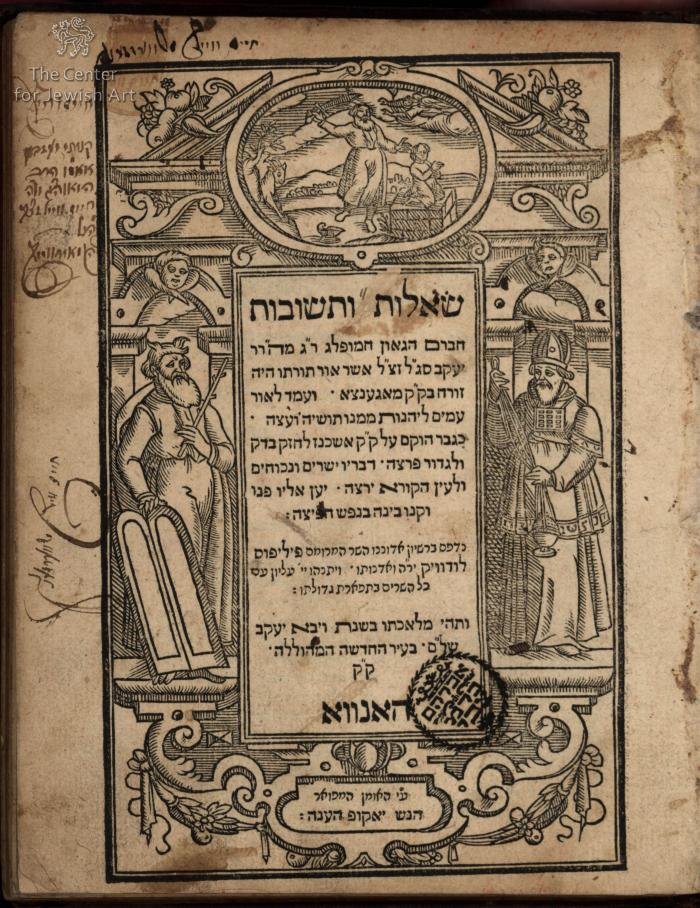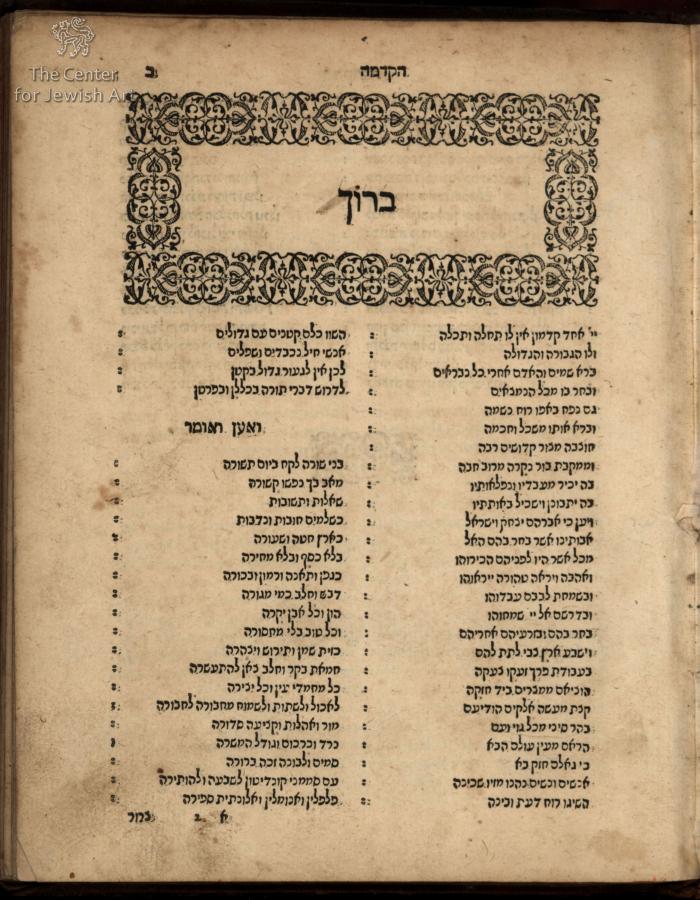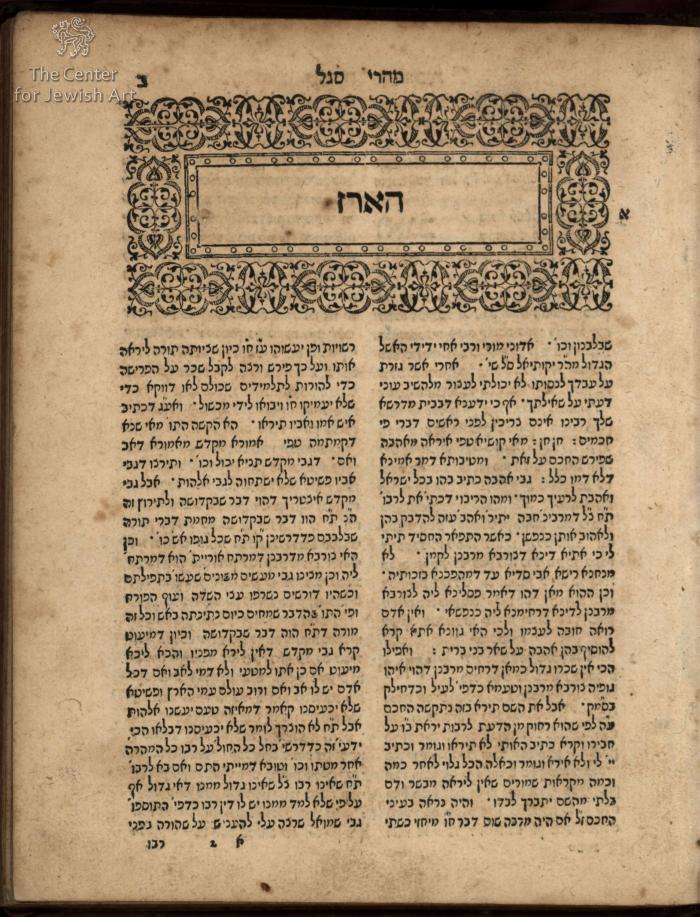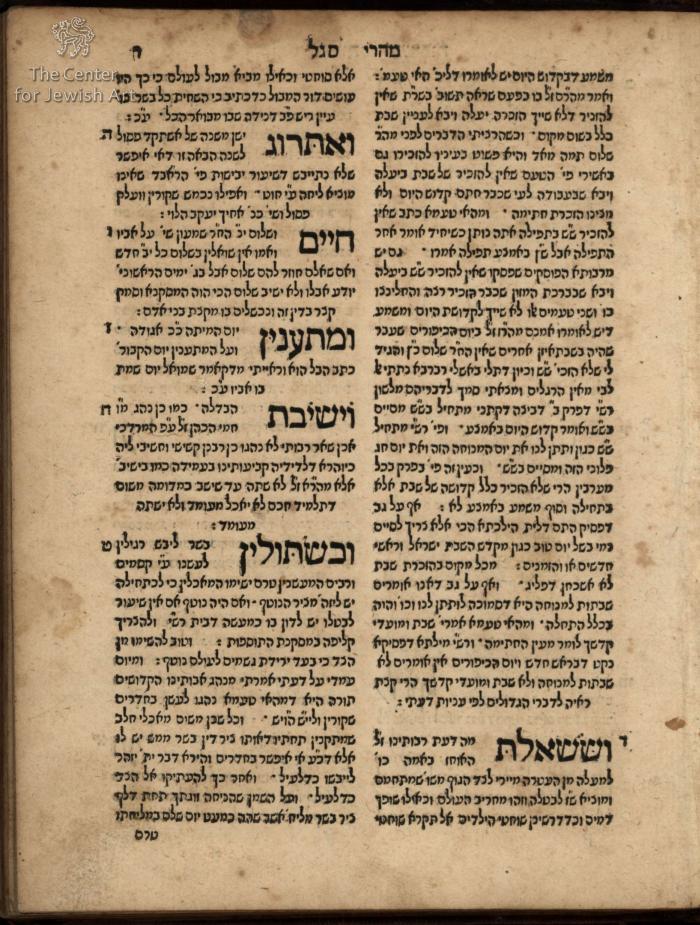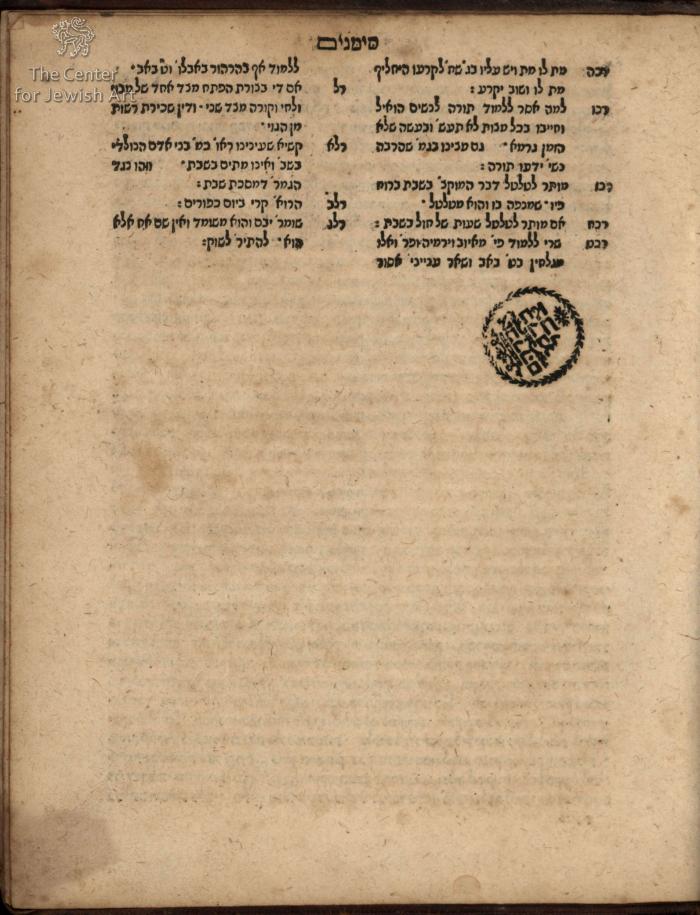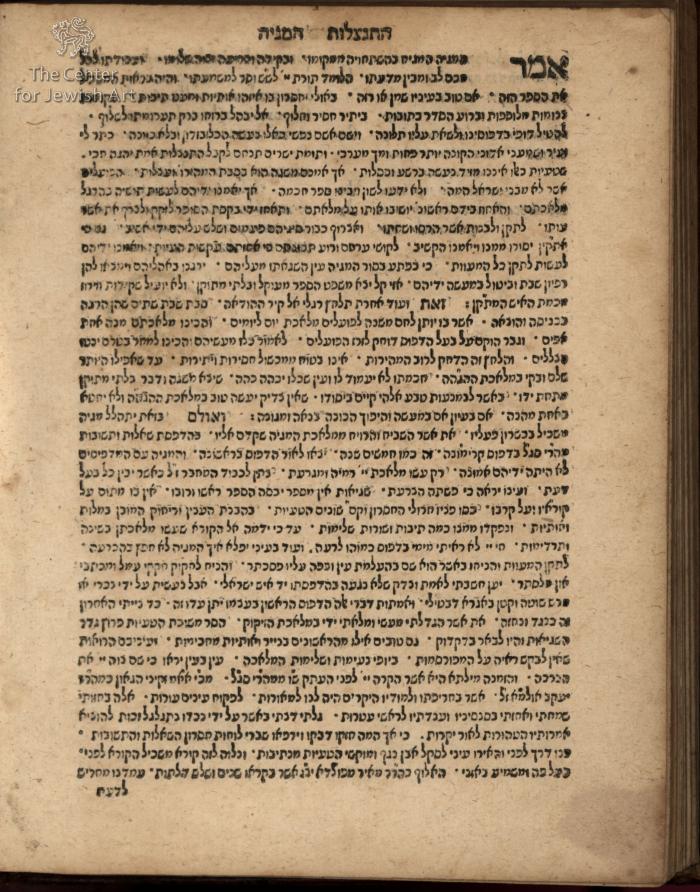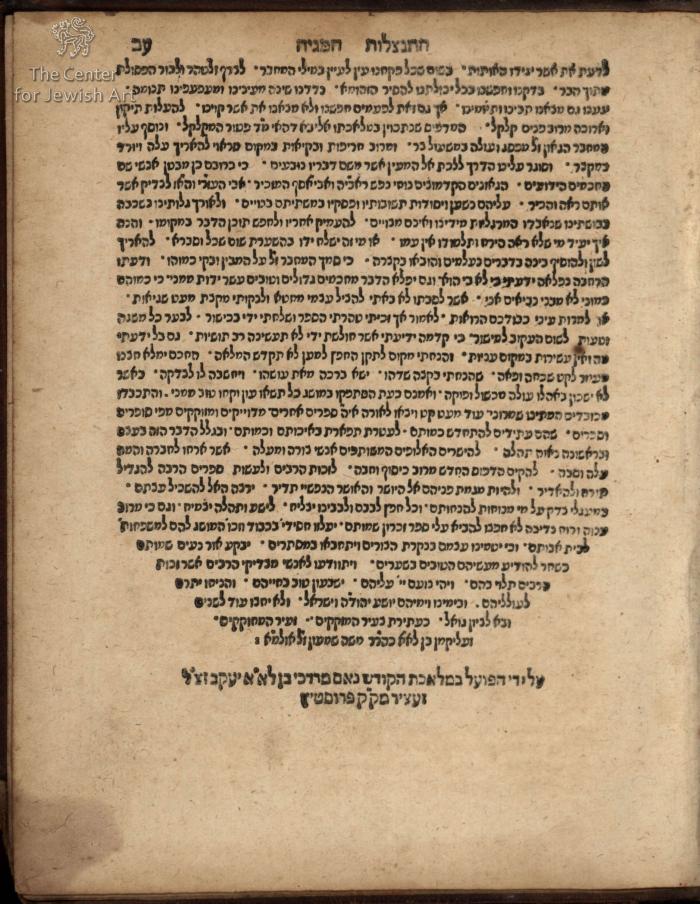Obj. ID: 35683 Sheelot u-Teshuvot by Rabbi Shlomo ben Aderet (Rashba), Hanau, 1610

sub-set tree:
This text was prepared by William Gross:
This printing of a book of Responsa by Rabbi Shlomo ben Aderet (Rashba) is important both for its textual content and it's artistic content. It is the first Hebrew book with a title page showing the figures of Moses and Aaron. This motif would become a norm in Hebrew book printing for many generations to come.
Shlomo ben Aderet (1235–1310) was a Medieval rabbi, halakhist, and Talmudist. He is widely known as the Rashba (Hebrew: רשב״א), the Hebrew acronym of his title and name: Rabbi Shlomo ben Aderet.
The Rashba was born in Barcelona, Crown of Aragon, in 1235. He became a successful banker and leader of Spanish Jewry of his time. He served as rabbi of the Main Synagogue of Barcelona for 50 years. His teachers were the Ramban and Rabbeinu Yona. He was considered an outstanding rabbinic authority, and more than 3,000 of his responsa are known to be extant. Questions were addressed to him from Spain, Portugal, Italy, France, Germany, and even from Asia Minor. His responsa, which cover the entire gamut of Jewish life, are concise and widely quoted by halakhic authorities.
The printer, Hans Jacob Hena, established his press in 1610, transforming the city of Hannau into a significant center of Hebrew printing. In his first year of activity he issued this collection of responsa, responsa by R. Jacob Weil and R. Judah Mintz, and Jacob b. Asher's Arba'ah Turim. Employing both Jews and gentiles, his press produced a great number of rabbinic, kabbalistic, and liturgical items within about 20 years. Hena himself died in 1613.
72 leaves


